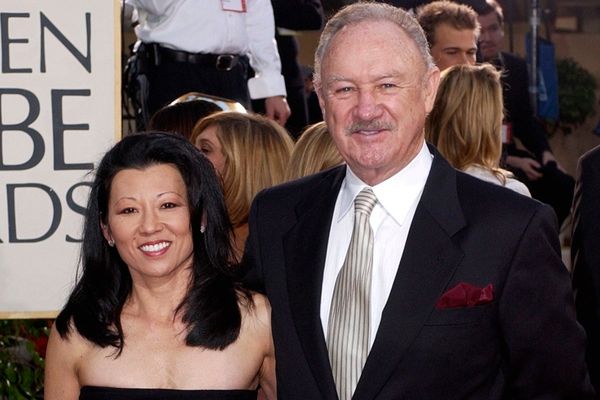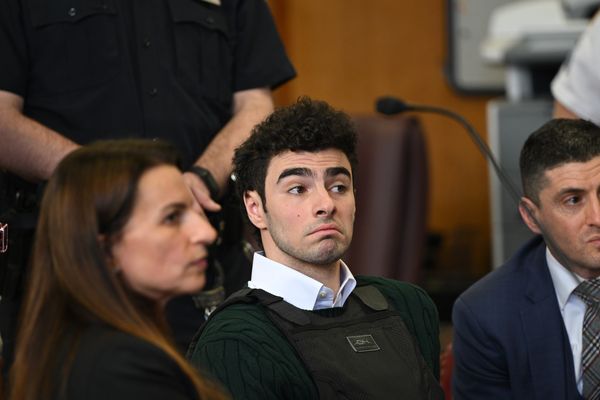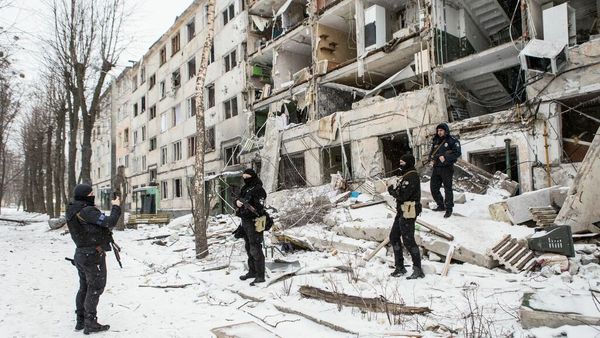Russian airstrikes hit three cities in Ukraine on Friday – including two in the country’s west – as the scope of its military offensive widened.
The raids hit airfields in Lutsk and Ivano-Frankivsk, far from the main areas of conflict, and residential buildings in the strategically important city of Dnipro, which sits on the Dnieper River.
The air raids came as new satellite imagery from Maxar Technologies showed that a 40-mile convoy that had been approaching the Ukrainian capital, Kyiv, had dispersed as tanks and artillery moved to what appeared to be firing positions to the north-west of the city.
The Ukrainian military said Russia was trying to “block” Kyiv by taking out defences to the west and north of the capital, adding that there was also a risk to Brovary on the east.
As the mayor of Kyiv, Vitali Klitschko, said that about 2 million people, half the population of the metropolitan area, had left the capital, preparations continued for its defence. “Every street, every house is being fortified,” he said.
“Even people who in their lives never intended to change their clothes, now they are in uniform with machine guns in their hands.”
Ukrainian soldiers described fierce fighting for control of the main highway leading into the capital, while missile strikes were reported hitting Velyka Dymerka just outside Kyiv’s city limits.
“It’s frightening, but what can you do?” said Vasil Popov, a 38-year-old who works in advertising sales. “There is nowhere to really run or hide. We live here.”
Despite heavy losses of personnel and equipment in the third week of Russia’s brutal assault on Ukraine – in which cities have been placed under siege and subjected to bombardment – Vladimir Putin’s forces were pushing ahead with their campaign.
The Russian defence ministry spokesperson, Igor Konashenkov, said Russia used high-precision long-range weapons on Friday to put military airfields in Lutsk and Ivano-Frankivsk “out of action”.
The airstrike on the Lutsk military airfield early on Friday left two members of the Ukrainian forces dead and six people wounded, according to the head of the surrounding Volyn region, Yuriy Pohulyayko.
Images of the aftermath showed what appeared to be a massive explosion that set fire to what looked like fuel storage tanks and cratered the runway.
Lutsk residents said they were woken at 6.45am on Friday when four Russian rockets hit the city’s military aerodrome.
One said: “We live 2km away. The rockets woke us up. We had been living in Kharkiv and left the city last week. The Russians bombard Kharkiv 100 times a day. Compared to that, this wasn’t as bad.”
The strikes also targeted an airport near Ivano-Frankivsk, where residents were ordered to shelters after an air raid alert, the mayor, Ruslan Martsinkiv, said.
Three Russian airstrikes also hit the eastern industrial city of Dnipro early on Friday, killing at least one person, according to the Ukrainian interior ministry adviser, Anton Heraschenko. They hit an area near a chemical plant, leaving a shoe factory completely destroyed, and breaking the windows on a nearby kindergarten.

The new wave of strikes came as clear skies on Friday made Russian air operations easier.
Despite claiming to have “neutralised” the Ukrainian air forces and air defences in the first few days of the war, in the last week Russia has hit Ukrainian airforce sites a number of times, including striking an airfield in Vinnytsia – the city that is the headquarters of the Ukrainian airforce – with eight cruise missiles in a single attack.
The focus on Ukraine’s air assets appears to be part of a continuing effort by Russia to gain uncontested control of the air, which it has so far failed to achieve, but which would allow more air support to forces on the ground.
The latest strikes came amid contradictory assessments of Russian progress around Kyiv, with the Ukraine general staff saying the Russian advance had been halted and the Pentagon suggesting that it had moved forward about 3 miles in the north-west.
The satellite photos of Russian concentrations around Kyiv, meanwhile, appeared to show a massive convoy previously detected outside the Ukrainian capital had fanned out into towns and forests near the city with artillery pieces raised for firing, in another potentially ominous movement.
A US defence official speaking on condition of anonymity said Russian forces moving toward Kyiv had advanced about 3 miles (5km) in the past 24 hours, with some elements as close as about nine miles from the city.
It appeared the convoy forces were moving west around the city, trying to encircle it to the south, according to Jack Watling, a research fellow at British defence thinktank the Royal United Services Institute.
“They’re about halfway around now, to be able to close off on the south,” he told BBC radio. He added they were likely preparing for a “siege rather than assault” on Kyiv because of continuing low morale and logistical problems.
While a move to a more static approach of shelling Kyiv from outside might be less costly for Russian forces in the first instance, it is not without risk.
The Ukrainian use of Turkish-supplied combat drones has been effective against Russian vehicles, and more static positions would be vulnerable to other Ukrainian aircraft, perhaps explaining the recent stepped up effort to knock Ukrainian airfields.










